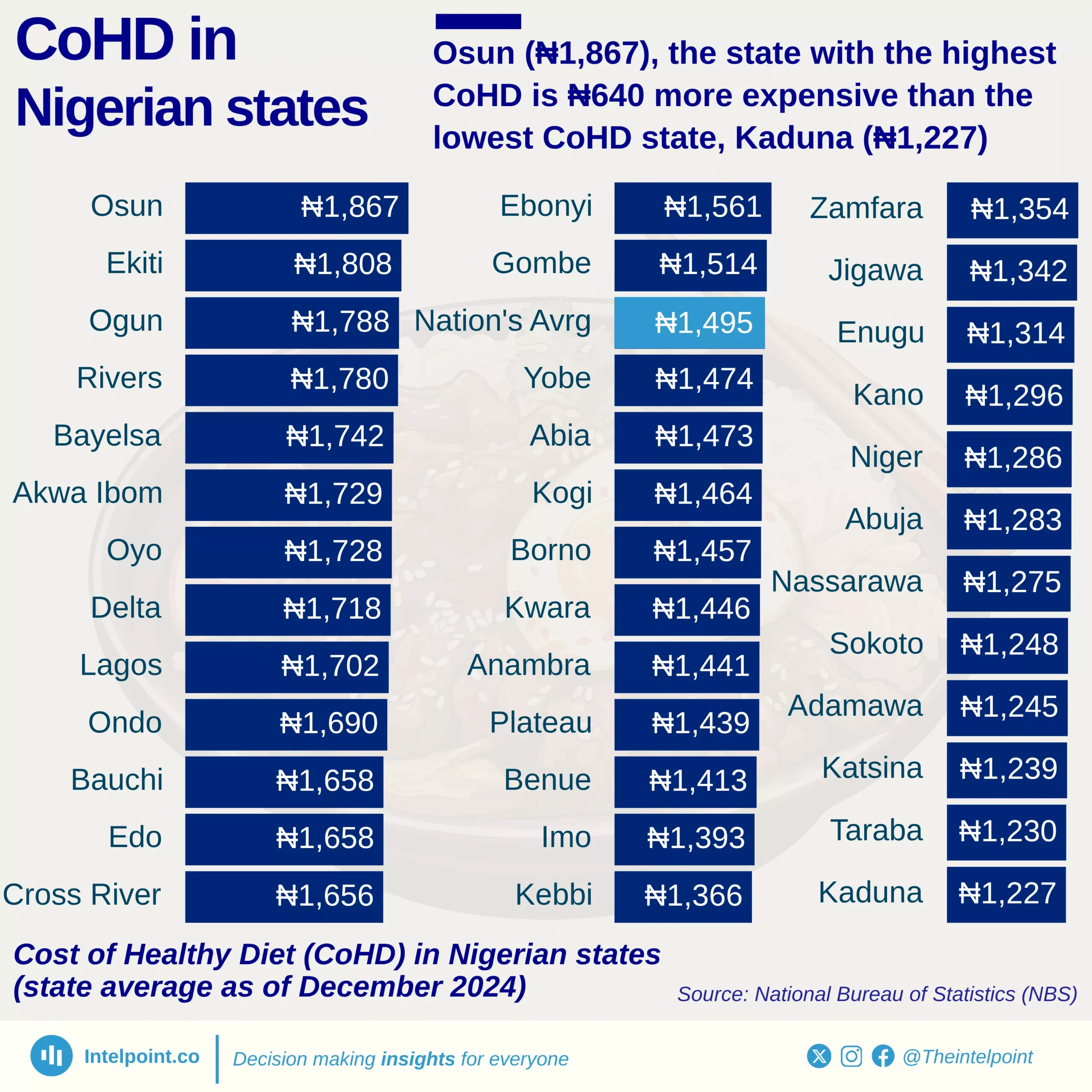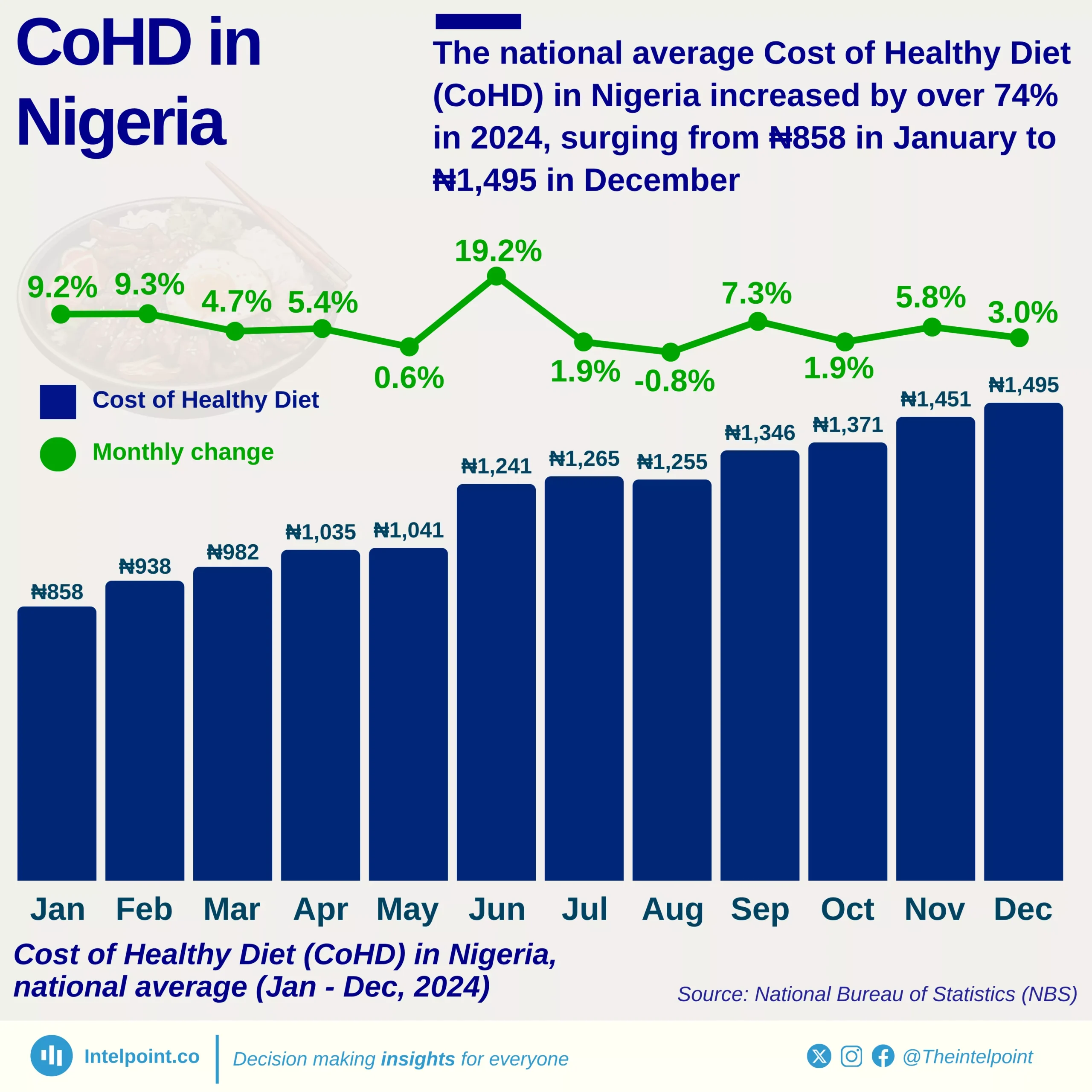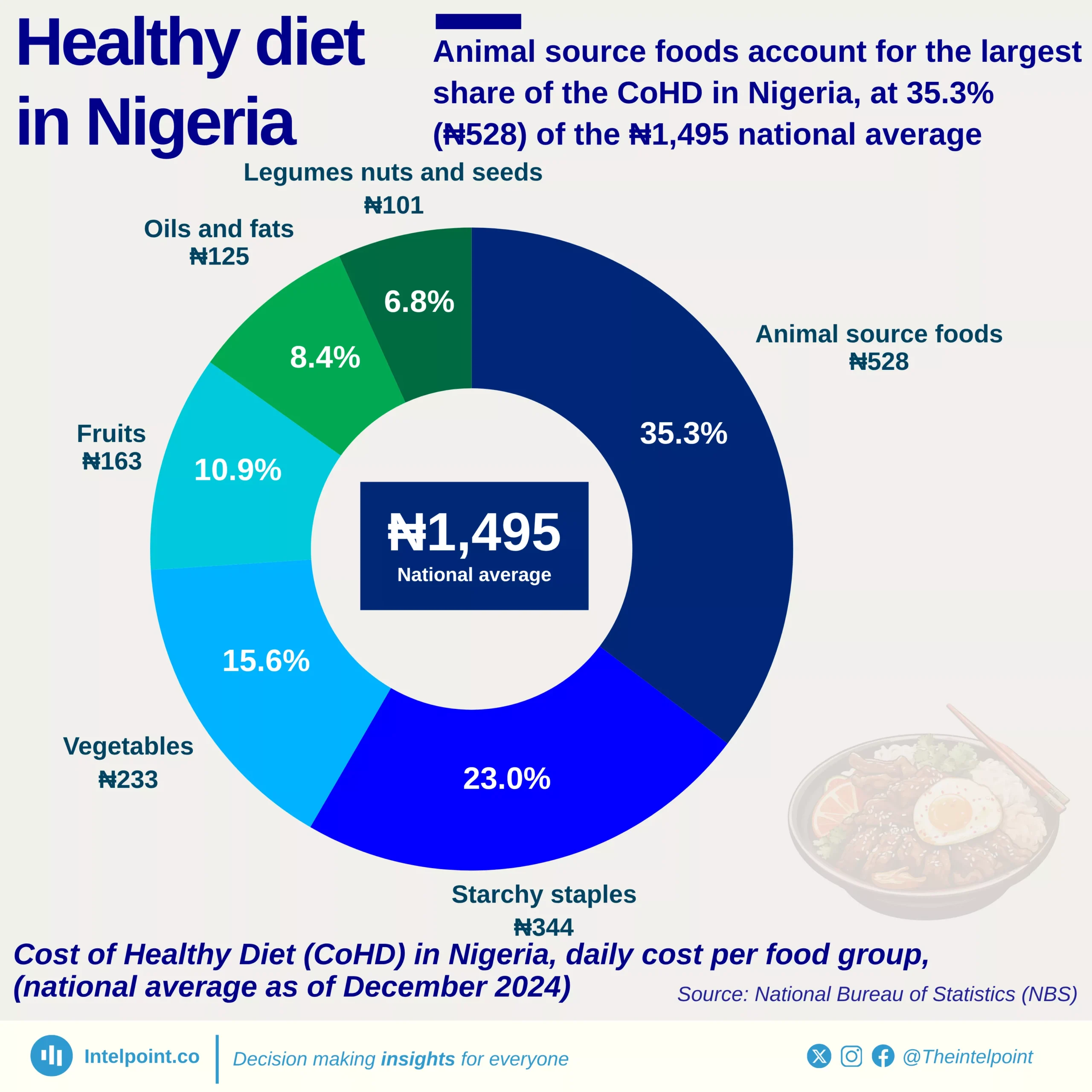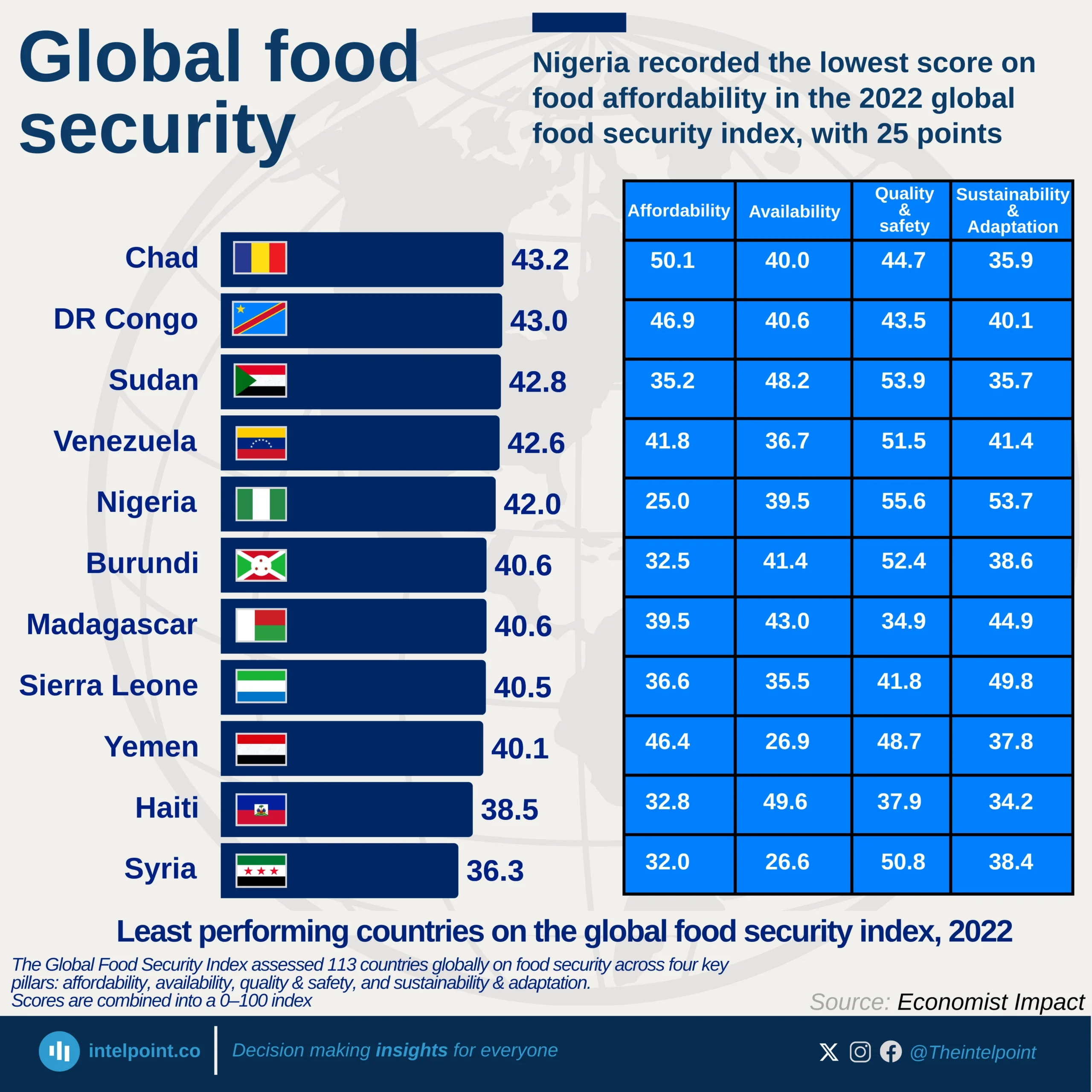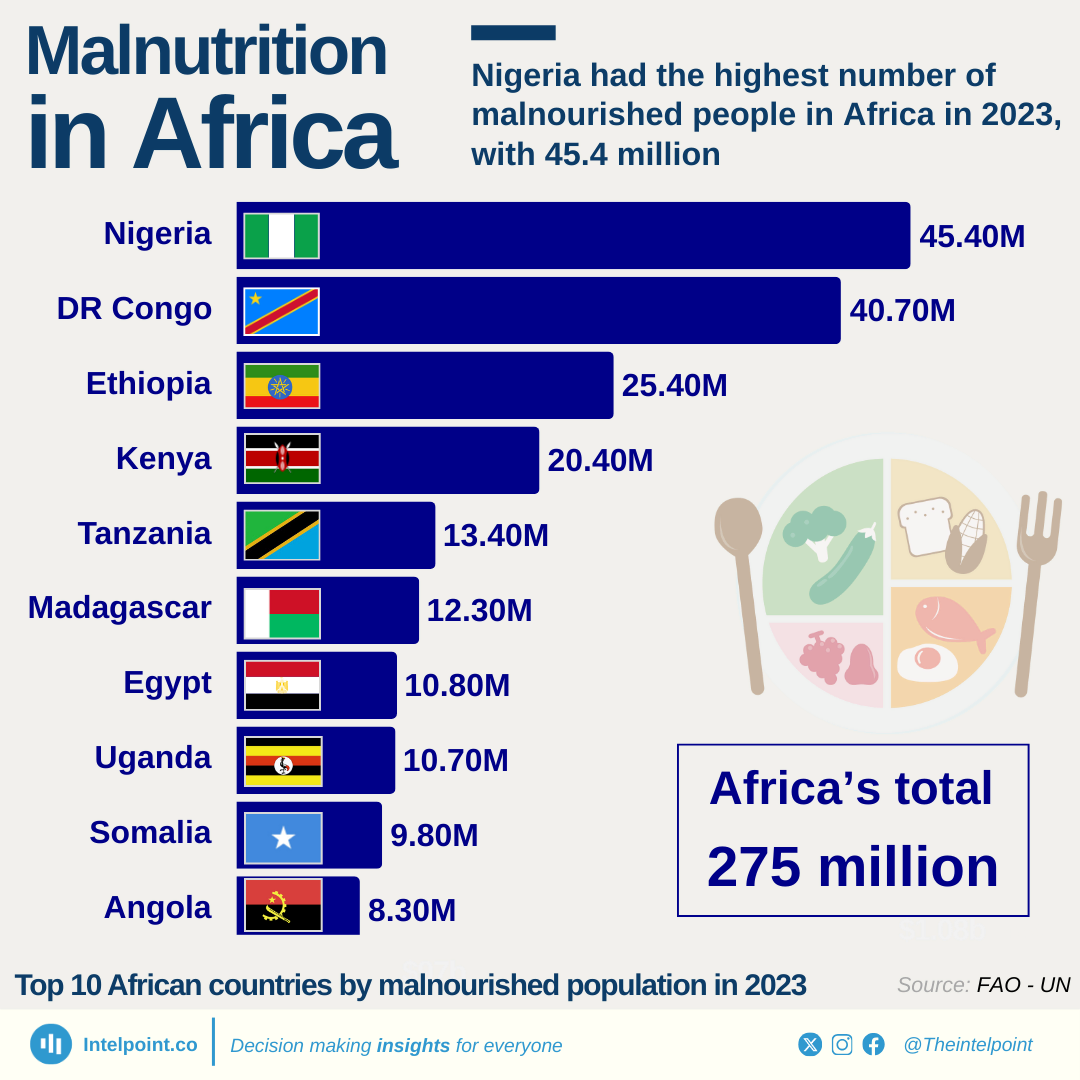The cost of maintaining a healthy diet in Nigeria continues to rise, with the South West zone recording the highest Cost of Healthy Diet (CoHD) at ₦1,764 as of December 2024 — ₦269 above the national average of ₦1,495.
This highlights the growing regional disparities in food affordability across the country, reflecting both economic pressures and food supply challenges that differ from one zone to another.
While the South South follows closely at ₦1,714, regions in the North show significantly lower figures, with the North West recording the lowest CoHD at ₦1,296. This north-south gap underscores how inflation, logistics, and market access affect the cost of nutritious meals differently across regions.
In the South West, higher urbanisation levels and reliance on market-purchased foods contribute to higher costs, while northern areas may benefit from proximity to agricultural production.
